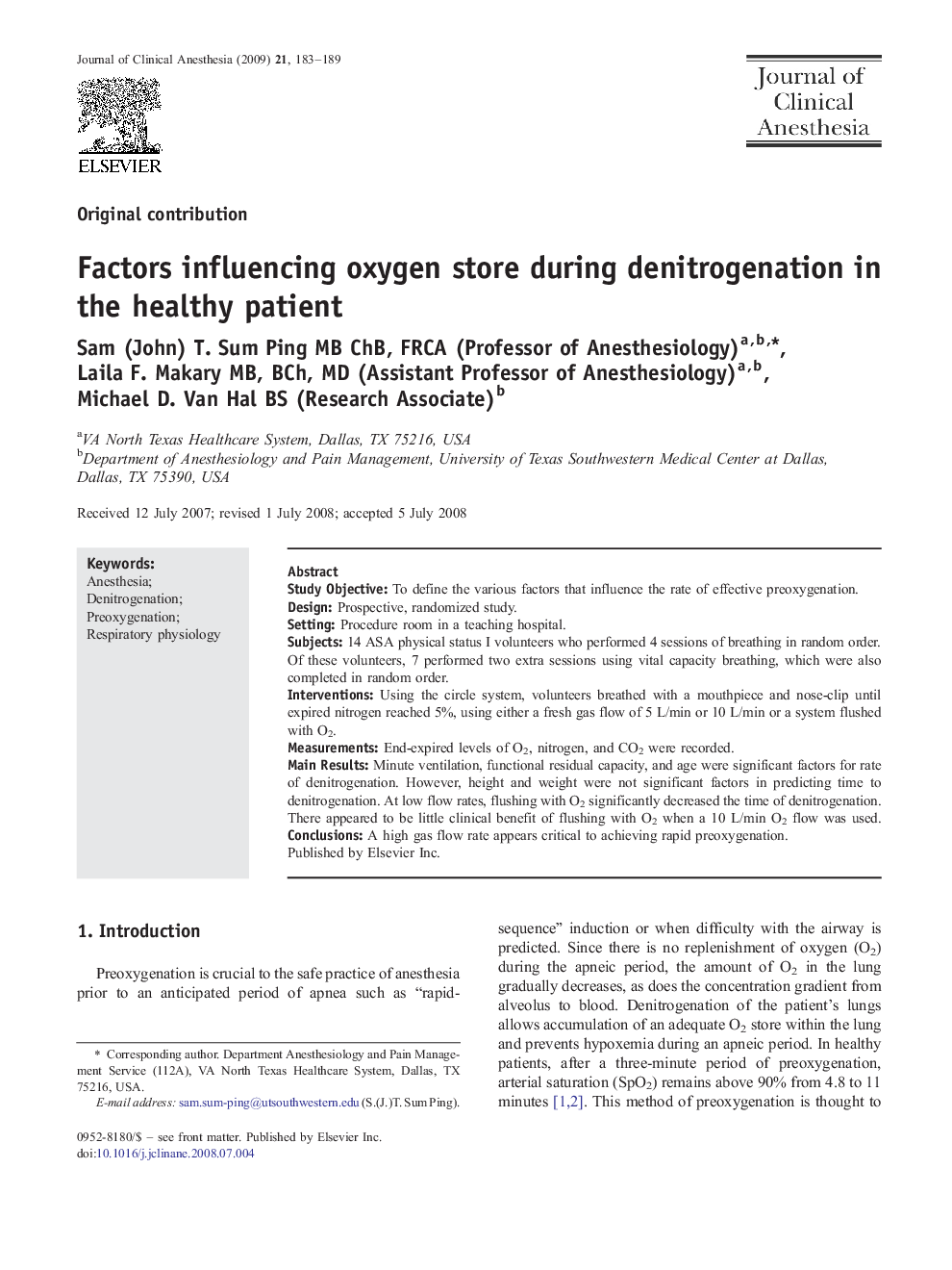| Article ID | Journal | Published Year | Pages | File Type |
|---|---|---|---|---|
| 2763528 | Journal of Clinical Anesthesia | 2009 | 7 Pages |
Study ObjectiveTo define the various factors that influence the rate of effective preoxygenation.DesignProspective, randomized study.SettingProcedure room in a teaching hospital.Subjects14 ASA physical status I volunteers who performed 4 sessions of breathing in random order. Of these volunteers, 7 performed two extra sessions using vital capacity breathing, which were also completed in random order.InterventionsUsing the circle system, volunteers breathed with a mouthpiece and nose-clip until expired nitrogen reached 5%, using either a fresh gas flow of 5 L/min or 10 L/min or a system flushed with O2.MeasurementsEnd-expired levels of O2, nitrogen, and CO2 were recorded.Main ResultsMinute ventilation, functional residual capacity, and age were significant factors for rate of denitrogenation. However, height and weight were not significant factors in predicting time to denitrogenation. At low flow rates, flushing with O2 significantly decreased the time of denitrogenation. There appeared to be little clinical benefit of flushing with O2 when a 10 L/min O2 flow was used.ConclusionsA high gas flow rate appears critical to achieving rapid preoxygenation.
